It’s Brie the Plant lady continuing to share tips and tricks from my native gardening project which took root just one year ago. Through these Soil³ blogs, I aim to share the inspiration and knowledge gained from my triumphs and setbacks in nurturing this space from its inception!
If you missed the first part of the story, you can read it here Part 1: Breaking Ground & Soil Prep.
The Carolina Garden House started coming together when the first native tree and shrub borders were planted in Soil³
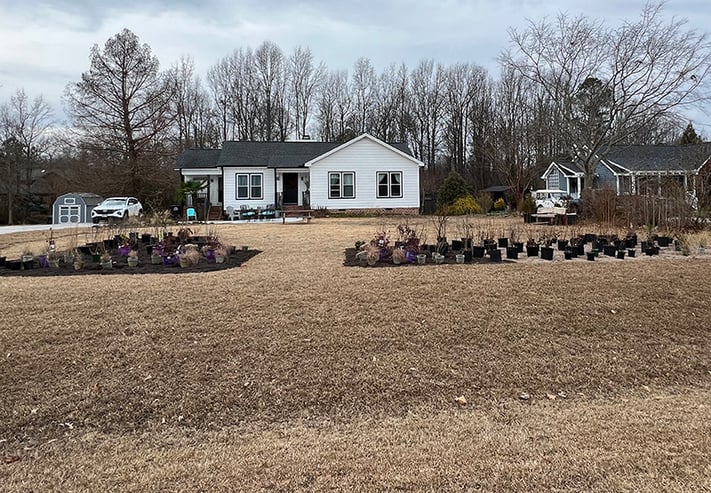
My Shift to Native Trees & Shrubs
Before I dive into the native tree and shrub list let me explain a few aspects of my background. Picture this: back in 2011, I was knee-deep in the soil, working as the propagator and grower at Camellia Forest Nursery. My specialty? Rare, Asian native trees and shrubs, the very "bones" of what would later become The Arthur Foodscape. Fast forward, and this space has become more than just a garden; it's my living laboratory, a canvas to experiment with plants from around the globe, especially edibles.
The Arthur Foodscape isn't just about edibles and pretty flowers, it's the muse behind my books, "The Foodscape Revolution" and "Gardening with Grains." But the past decade hasn't just seen my garden grow; it's witnessed a shift in my career and a deepening interest in native plants.
My stint as a six-year board member of the North Carolina Botanical Garden Foundation was transformative. Conversations with the knowledgeable staff ignited a curiosity that led me to focus on planting native species, expanding my plant palette and diving into the local varieties of this region.
Planting Trees & Shrubs in my New Garden
So, what's the latest chapter in my horticultural adventure? Well, I recently broke ground on a 650-square-foot front yard native shrub border.
Front yard gardening isn't just about plants; it's about building a community. From day one, my neighbors were on board, asking questions, pitching in, and even getting the kids involved.
It's become a shared project, and you can witness the magic unfold on my YouTube channel:

When to Plant
Why is winter the season for this project? Well, when the plants are dormant, the temperatures are cool, and the rains are plenty, it's the perfect time to set the stage for summer. Less watering, better establishment—strategic, right?
This video explains the process:
Where to Buy
But let's talk about challenges. Sourcing native plant material isn't as easy as it should be. Despite the surge in interest in sustainable landscaping, big-box stores and garden centers still have a limited selection. My workaround? North Carolina's outstanding sources—retail and wholesale. A bit of Googling and driving, and you can find exactly what you need. I am extra grateful for Carolina Native Nursery where most of the shrubs and perennials came from.
I hope you enjoy this behind-the-scenes tour:
Plant List
Now, onto the stars of the show—the plants!
Please check out the complete list on my Carolina Garden House page but let me share some highlights right here.
We've got seed-grown native azalea species and yaupon holly cultivars stealing the show, though admittedly, some of the native azaleas suffered in the reality of full sun and dry conditions. Those were transplanted to the woodland mid-summer and are thriving in their new space! The shrub collection leans deciduous, promising a tapestry of fragrant flowers and stunning fall colors.
>>Read my article all about the different Native Azaleas
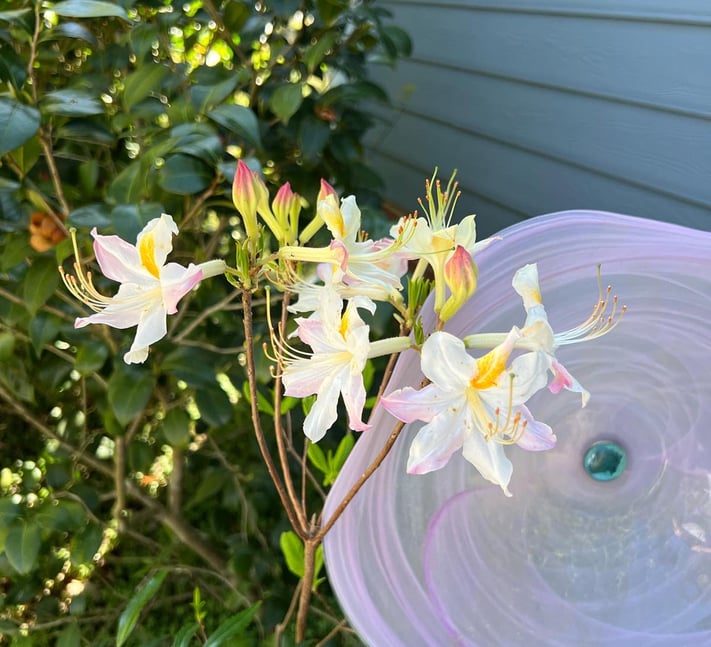
I'm especially thrilled about two newcomers in my garden, meadowsweet (Spiraea alba) and steeplebush (S. tomentosa), both species of spiraea I've never grown before.
And the viburnum family is well represented with arrowwood (V. dentatum), blackhaw (V. prunifolium), and southern blackhaw (V. rufidulum) all stepping into the spotlight.
Here's Viburnum rufidulum, southern blackhaw, in flower (the leaves turn gorgeous red-burgundy in autumn)

Another new to me plant is 'Fiber Optics' Buttonbush (Cephalanthus occidentalis). It's a game-changer—a compact cultivar with pollinator-friendly flowers thriving in our swampy terrain from the First Editions plant line.
I was naively hopeful that the sweet pepperbush (Clethra alnifolia) would survive in this shrub border. It is a long-time favorite, with fragrant summer flowers reaching impressive heights, but by July it was showing serious signs of decline, so they were also transplanted to the woodland. In contrast, coastal witch-alder (Fothergilla gardenia) and 'Jetstream' oakleaf hydrangea (Hydrangea quercifolia) both thrived in the full sun, proving their worth and leading me to plant more!
Here's Fothergilla gardenii, coastal witch-alder, in flower (the leaves can turn a kaleidoscope of yellow, orange, or red in autumn)
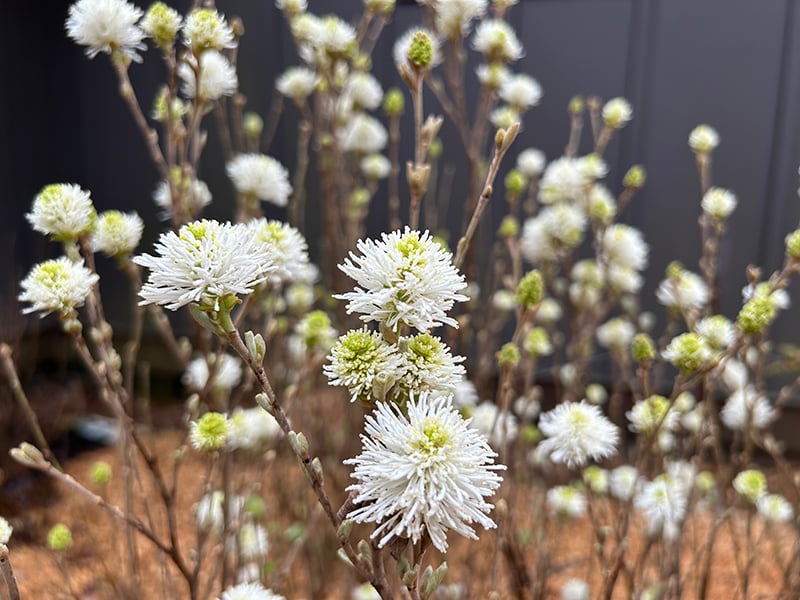
Here's Hydrangea quercifolia, oakleaf hydrangea, in flower (it also has gorgeous red-burgundy fall color)
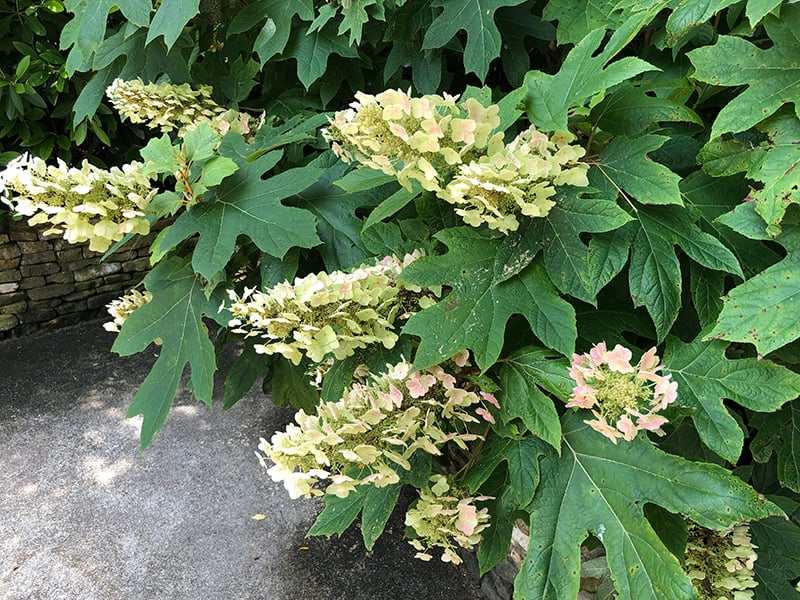
And then there's 'Tiger Eyes' sumac (Rhus typhina), strategically planted to hide an unsightly utility box. Of course, this means we had to call 811 first to get all the utility lines marked. With vivid chartreuse leaves in the growing season and a breathtaking display of scarlet, orange, and purple hues in the fall, 'Tiger Eyes' makes a wonderful addition (though the deer immediately found it and ate it to the point of no return!)
Alas, in the short term I filled the utility box bed with native grasses and am re-evaluating the planting now, and that is exactly why I wanted to share my experience with all of you! Sometimes best laid plans don’t pan out and the key to success is to be willing and able to shift and learn. Now that I am one year into this project, I can really start to see what the best plant choices are, and moving forward make better decisions.
This video shows the process of planting a bed around a utility box with native trees and shrubs, including 'Tiger Eyes':
In this video you can learn more about all the trees and shrubs I listed above:
See you next time for more of the story about creating a native plant garden from scratch, when we will cover the native grasses and flowering perennials layer.
Brie the Plant Lady
All photos & videos by Brie Arthur; exceptions are the Viburnum, Fothergilla, and Hydrangea flower pictures by Hillary Thompson.
>>Want to learn more about native plants? Then peruse Laurie Wakefield's Soil³ Story about The Pollock's Native Plant Garden.
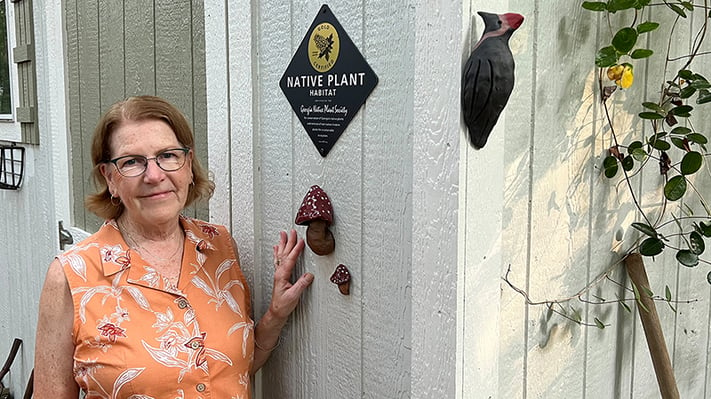
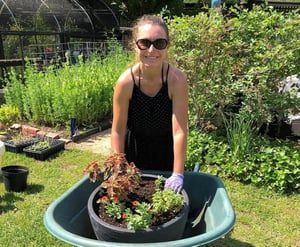


Did this help you out? Have any questions for clarity? Leave a comment below!